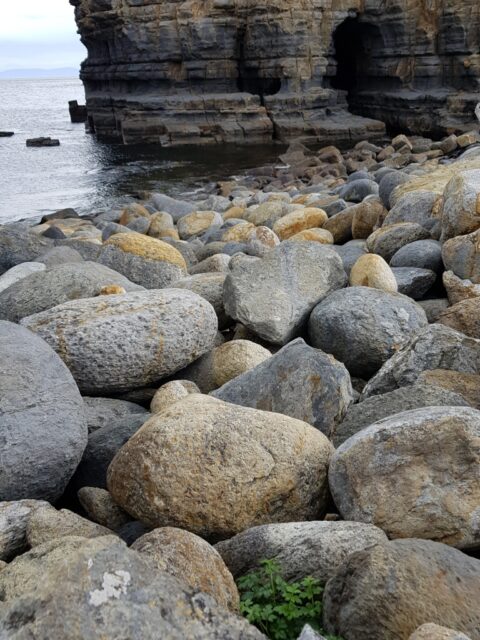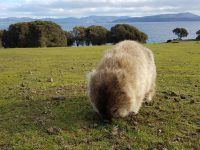Winter Frost
Going from the warmth of the top end of Australia on my last tour, and now being back in crisp and cool Tasmania, I was sent this question which seemed appropriate as I went from t-shirts to jumpers and jackets:
Q- I have a small kangaroo paw which has been flowering for months. Had a
frost two nights ago and now all the flowers have drooped and look
terrible. What should i do?
A – Frost will burn off the flowers and may also cause some blackening of the leaf tips. If you trim off the droopy or blackened parts the plant should survive OK, especially if you can give some temporary protection such as a hessian cover while there is still a danger of more frost. If that is not possible, giving the plants an overhead water over anything that is covered in white frost before the sun hits will lessen the damage.
There is some excellent advice from The Australian Plant Society Victoria, on gardening with frost, on this page- https://apsvic.org.au/protect-your-plants-from-frost-damage/. It is based on an article by the legendary Rodger Elliot, and is well worth a read.
On the road…
Shipsterns Bluff on the Tasman Peninsula
I’ve been looking forward to spending some time out in the bush this Winter, and with all the jobs taken care of in the garden at home I’ve been taking the opportunity to get out and do some plant hunting.
Sea Celery at Tunnel Bay
I’ve done some more exploring locally around Tasmania, checking out the unique flora and landscape of Cradle Mountain, Mount Field National Park, Maria Island and more. If you have Instagram, have a look at more pictures plus a video of this happy hungry Tassie wombat- https://www.instagram.com/gardeningwithangus/
Wombat on Maria Island, he looks like he is wearing a frost protection jacket!
I also spent some time at Habitat Nursery, who have a great range of native plants including lots of interesting bush tucker plants. This particular nursery really caught my attention for a few reasons. They are passionate about growing Tasmanian native plants. Their name comes from the idea that as we grow and care for native plants we are enhancing our own habitat: a habitat that is shared with wildlife.
One of the highlights this month for me was the tour I had the opportunity to lead up north in the Kimberley region. I love sharing my favourite spots with other plant lovers and I’ll never get tired of exploring in the bush and this area is magnificent. I will be in Western Australia in Spring. Each new year and season brings new discoveries, and I love getting the chance to see the wildflowers I know well, as well as the excitement of coming upon something unexpected, a rare flower, a field of paper daisies as far as the eye can see or a patch of orchids peeking up from the earth.
The experience of seeking out treasures in the bush takes me back to my childhood and my earliest adventures hunting for flowers for my grandmother Daisy Wood, who was a passionate botanist and artist. Under her guidance I learned how to recognise different local plants and flowers, and more importantly a great appreciation for the natural world. The great enthusiasm she had for the Australian landscape and flora is captured in her intricate paintings of individual flowers and arrangements, and for me there’s a very special excitement to finding the flowers that inspired her art still thriving in the wild. Getting out on tour gives me the chance to share that experience with others, just as she did through her paintings. I’ve created prints of her art work which I have put onto greeting cards….available through the Gardening with Angus website……https://www.gardeningwithangus.com.au//product/daisy-wood-4-card-set/
Getting out on tour in all the different parts of Australia also gets me thinking about our connection to nature and landscape, and that of the indigenous people of Australia. Indigenous knowledge of plants, animals, seasons, connection to country – it runs parallel to the role of the conscious gardener as custodian of land.
This is an ethos I strongly believe in and do my best to foster. Considering so much habitat loss and destruction I see with hope that many people are planning and planting their gardens to rebuild some of the abundance that existed before, that our first peoples presided over and nurtured.
This is something I hope to focus on in my upcoming Western Australia tours this October. WA is an inspiring place that is rich with traditional Aboriginal culture. It has flora like no other place on Earth. And the aim is to combine the two, immersing a small group of 12 people in an aboriginal culture expedition exploring bush foods with a local elder, and going off the beaten track to discover some of the most beautiful botanical sights. For more information on upcoming tours click here: https://www.gardeningwithangus.com.au//western-australia-5-day-plant-hunting-tour-october-2018/
Don’t forget, National Tree Day this Sunday – 29th July 2018. Plant a tree, create some good habitat!



